Giving And Getting Feedback Training Course in Norway
Our corporate training course is also available in Oslo, Bergen, Stavanger, Trondheim, Drammen, Fredrikstad, Kristiansand, Sandnes, Tromsø, Sarpsborg, Skien, Ålesund, Sandefjord, Haugesund, Tønsberg, Moss, Porsgrunn, Bodø, Arendal, Hamar, Ytrebygda, Larvik, Halden, Lillehammer, Mo i Rana, Molde, Horten, Gjøvik, Askøy, Kristiansund, Flåm, Geiranger, Svolvær, and Kirkenes.
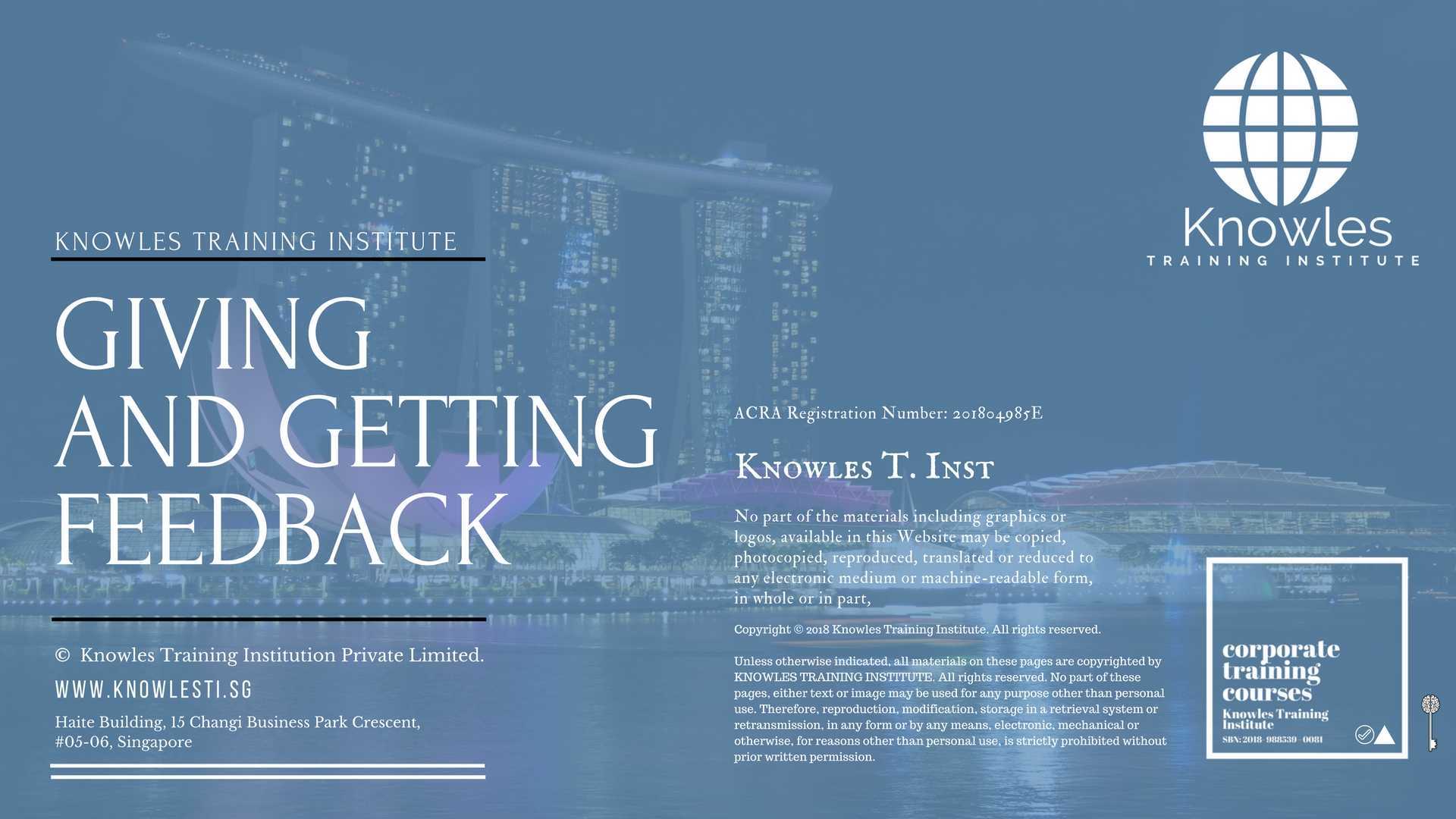
About This Giving And Getting Feedback Training Course in Norway
Giving And Getting Feedback Course in Norway
All corporate professionals are continually trying to improve themselves. No matter where you work, or what your job role, the best way to improve is through feedback. Giving—and receiving—feedback is a skill that’s relevant to every member of an organisation. In this course, training participants will learn how to give and receive quality feedback. Whether it’s with managers, peers, colleagues, team members, family, or even friends, the same laws apply crossed the board when it comes to giving and receiving feedback.
Who Should Attend This Giving And Getting Feedback Course in Norway Workshop
This Giving And Getting Feedback Course in Norway workshop is ideal for anyone who would like to gain a strong grasp and improve their Giving And Getting Feedback.
All Staff Within An Organisation
Managers
Team Leaders
Executives
Assistants
Officers
Secretaries
Group Size For This Giving And Getting Feedback Training Program in Norway
The ideal group size for this Giving And Getting Feedback course in Norway is:
Minimum: 5 Participants
Maximum: 15 Participants
Course Duration For This Giving And Getting Feedback Skills Course in Norway
The duration of this Giving And Getting Feedback workshop in Norway is 2 full days. Knowles Training Institute Norway will also be able to contextualised this workshop according to different durations; 3 full days, 1 day, half day, 90 minutes and 60 minutes.
2 Full Days
9 a.m to 5 p.m
Giving And Getting Feedback Course in Norway Benefits
Below is the list of course benefits of our Giving And Getting Feedback course in Norway
- Learn to give feedback
- Learn to take feedback
- Understand why feedback is important
- Recognise the difficulties of giving constructive feedback
- Learn to take constructive feedback positively
Giving And Getting Feedback Course in Norway Objectives
Below is the list of course objectives of our Giving And Getting Feedback course in Norway
- Develop the skills needed to give constructive feedback
- Learn the humility to be able to take constrictive feedback
- Establish mechanisms for when feedback given/taken is negative
- Initiate the implementation of phrasing things positively
- Conduct assessments of what happens when feedback is not consumed in the desired way
- Make plans that ensure people are not offended by feedback
Course Content For This Giving And Getting Feedback Training Course in Norway
Below is the list of course content of our Giving And Getting Feedback training course in Norway
- The importance of feedback
- How to give feedback
- How to receive feedback
- How to make feedback positive rather than negative
- What to do when feedback is misinterpreted
- What to do when you’re offended by feedback
- How to use feedback to improve
Giving And Getting Feedback Course in Norway Value Added Materials
Each participant will receive the following materials for the Giving And Getting Feedback course in Norway
Giving And Getting Feedback Course in in Norway Learner’s Guide
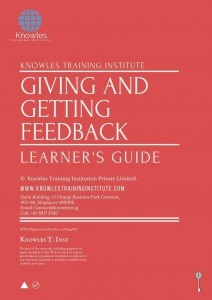
Giving And Getting Feedback Course in Norway Handouts

Giving And Getting Feedback Course in Norway PPT Slides Used During Course

Giving And Getting Feedback Course in Norway Certification
Each course participant will receive a certification of training completion
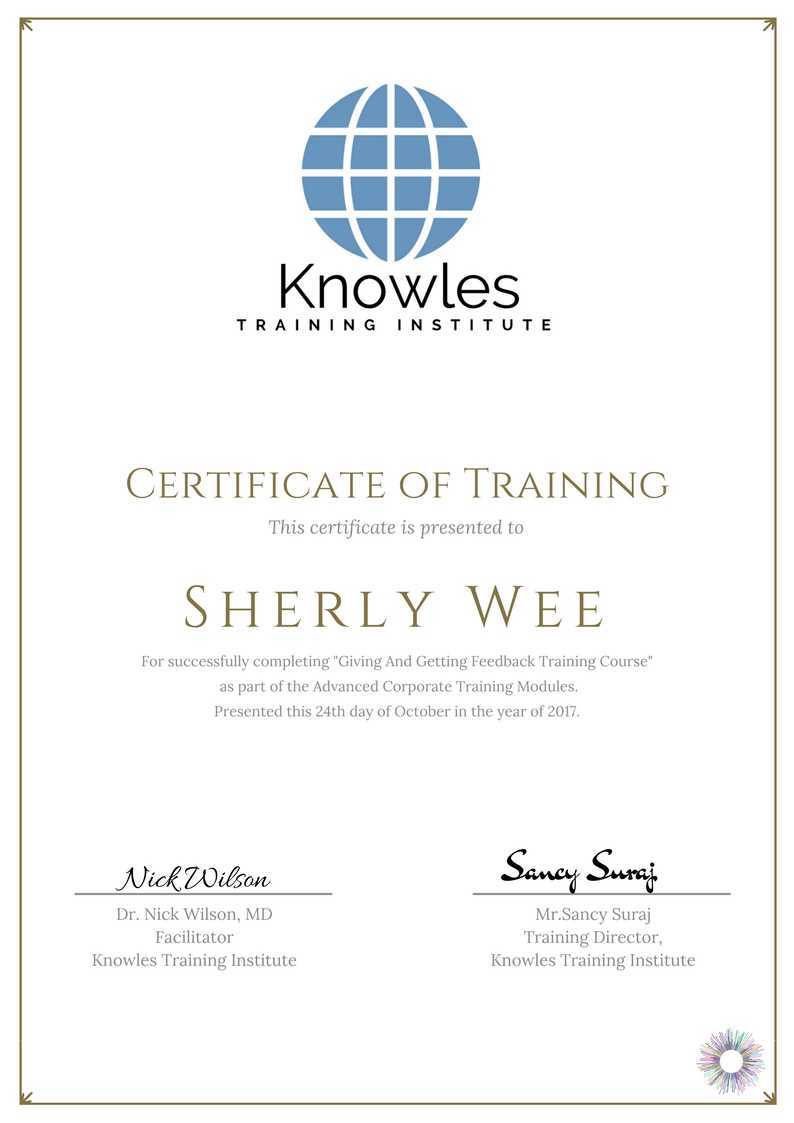
Course Fees For Giving And Getting Feedback Course in Norway
There are 4 pricing options available for this Giving And Getting Feedback training course in Norway . Course participants not in Norway may choose to sign up for our online Giving And Getting Feedback training course in Norway.
- USD 1,019.96 For a 60-minute Lunch Talk Session.
- USD 434.96 For a Half Day Course Per Participant.
- USD 659.96 For a 1 Day Course Per Participant.
- USD 884.96 For a 2 Day Course Per Participant.
- Discounts available for more than 2 participants.
Upcoming Giving And Getting Feedback Training Course in Norway Schedule
Contact us for the latest Giving And Getting Feedback course in Norway schedules:
Email: contact@knowlesti.co.no
Message:
Download Giving And Getting Feedback Course in Norway Brochure
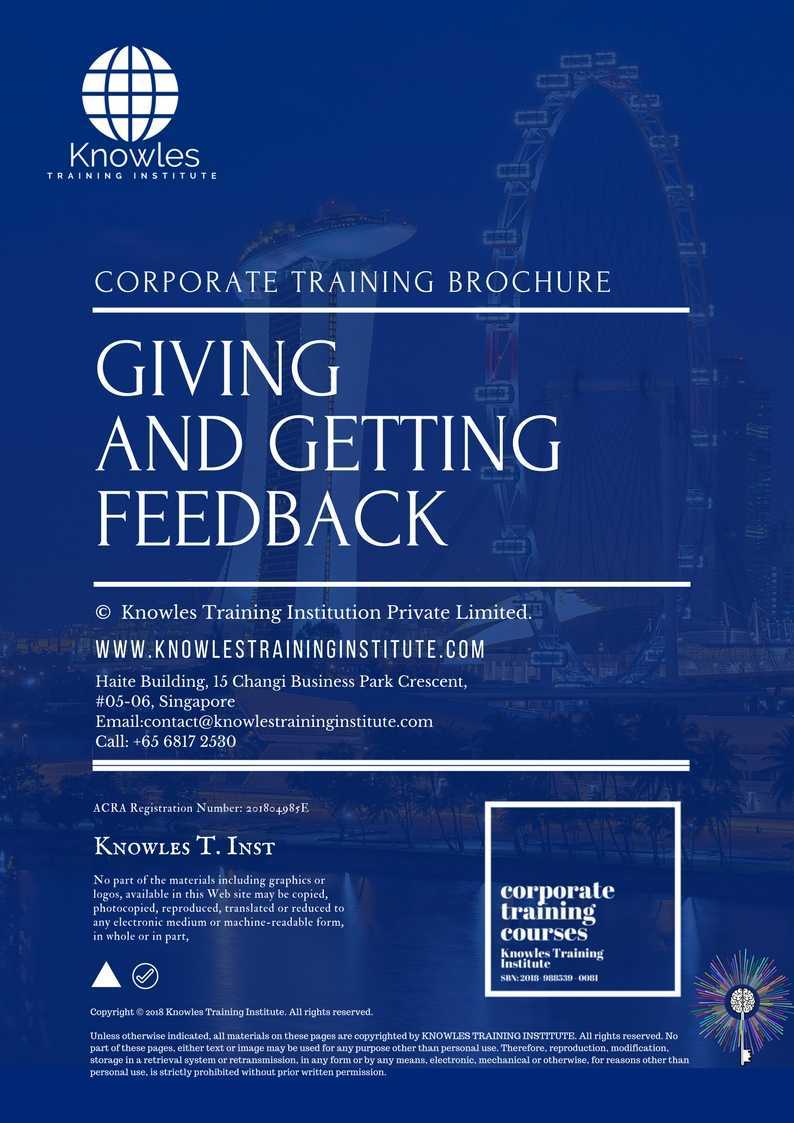
Request for this Giving And Getting Feedback course in Norway brochure. Fill up the short information below and we will send it to you right away!
Post Training Support: A vast majority of training does not have any effect beyond 120 days. To work, training has to have a strong pre- and post-training component. Post-training reinforcement helps individuals to recall the understanding and ask questions.
Blended Learning: Learning does not occur in the classroom. Virtually everybody prefers distinct ways of learning. Successful learning should have a multi-channel, multi-modal strategy.
- We Understand The Industry: We’ve got a profound comprehension of the business, business design, challenges, strategy and the that our participants are in and have designed the courseware to cater to their professional needs.
- Course Content: Knowles Training Institute’s material is relevant, of high quality and provide specific learning results. Participants will leave the training course feeling as they have gained a strong understanding and will also be in a position to execute what they have learned sensibly.
Course Development — The workshop modules follow a systematic and logical arrangement. This structure helps to ensure that the course material allows the facilitators to deliver the course in a logical arrangement. Consider the subjects as building bricks into learning, our facilitators slowly build towards a comprehensive picture of this entire topic.
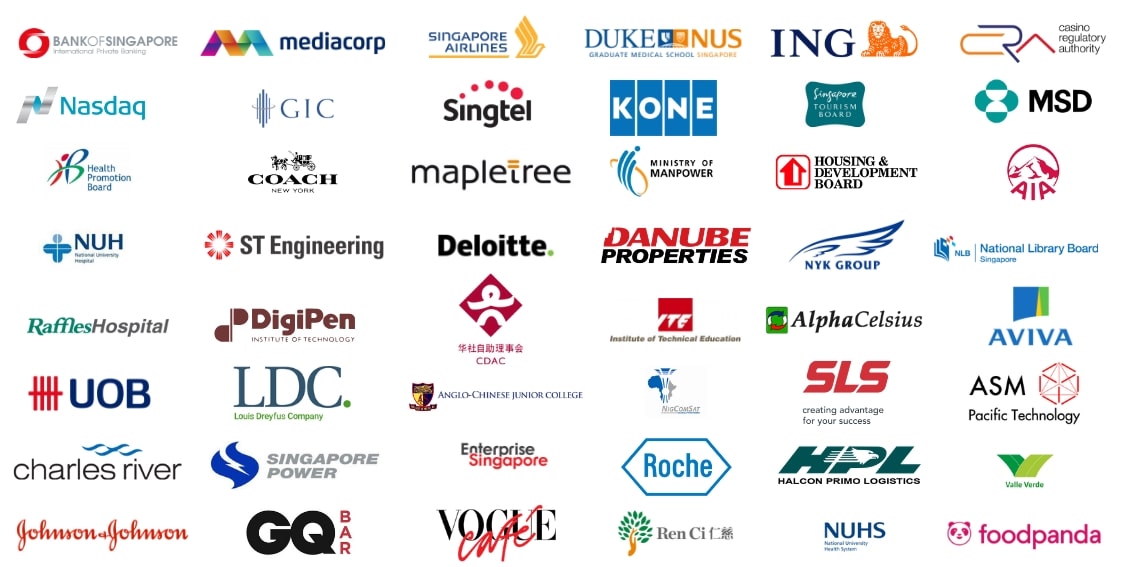
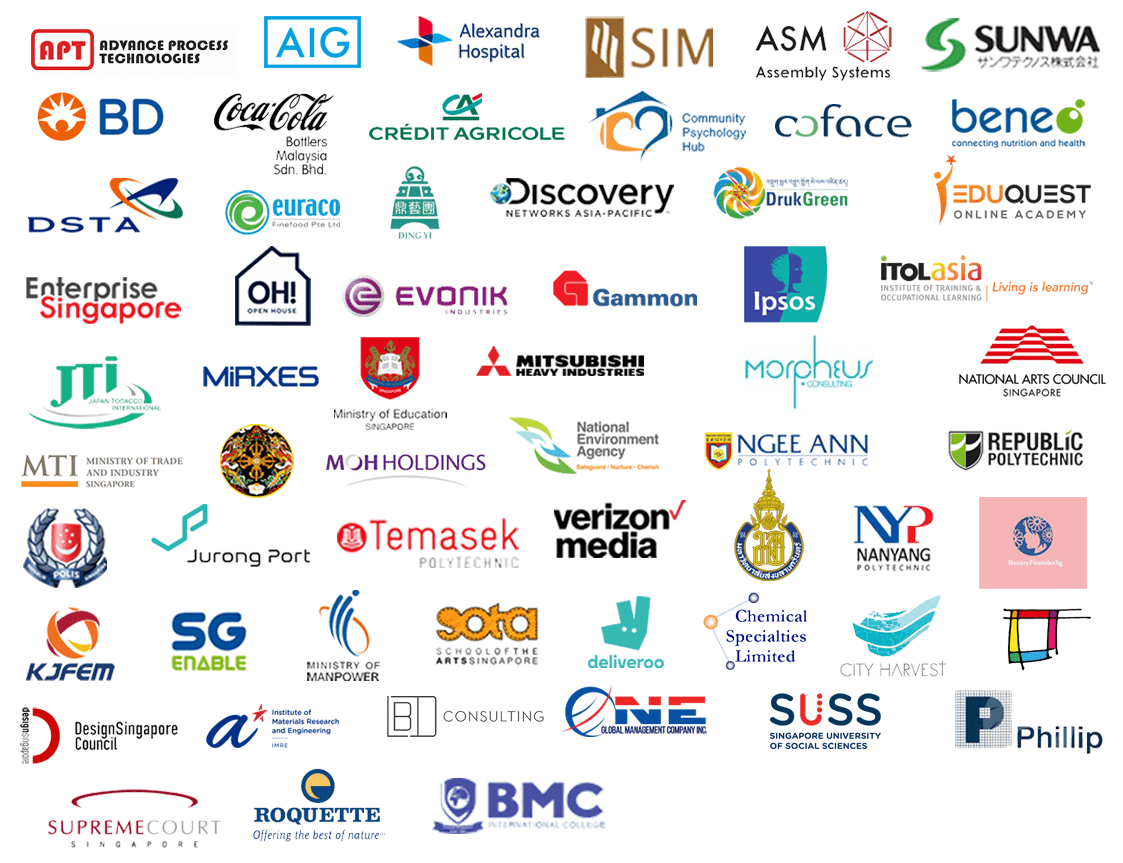
Course Enquiries
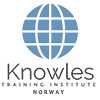
Fill up the form and we will get back to you in less than 1 working day.
Alternatively, give us a call to have one of our training consultants contact you. Our corporate training courses can be contextualized to meet your organization’s training needs. Leverage on our large pool of professional trainers and consultants for your organization’s training needs.
Email: contact@knowlesti.co.no
We Guarantee 100% Privacy. We Respect Your Privacy. Your Information Will Never Be Shared.

